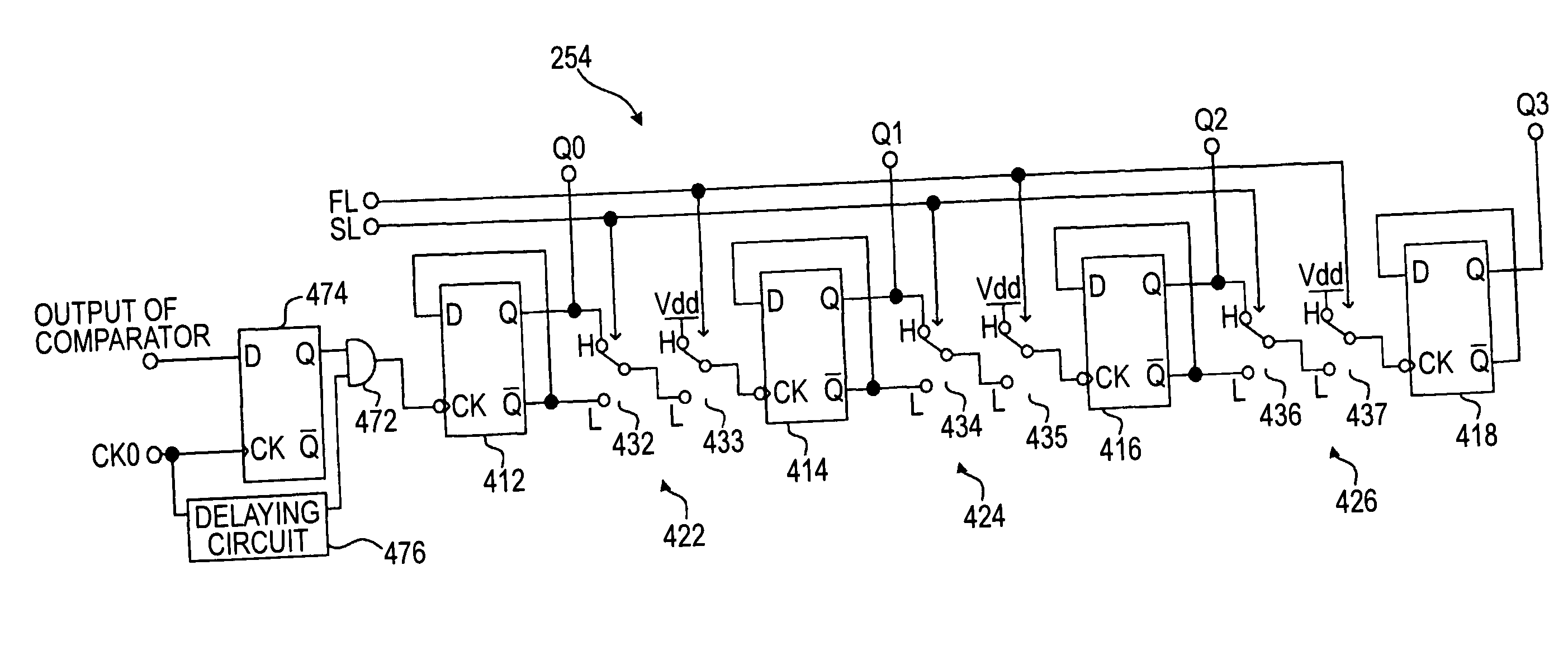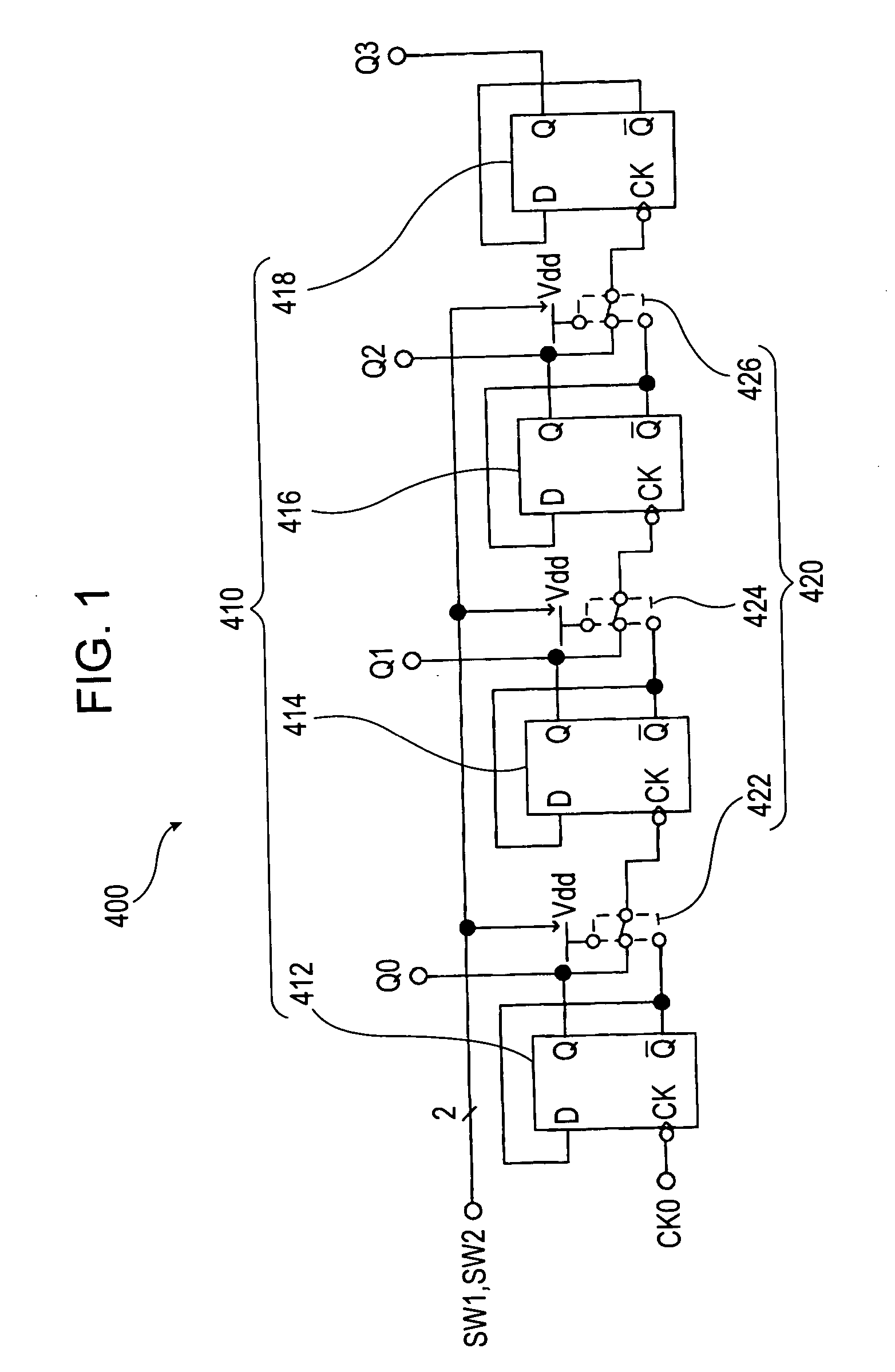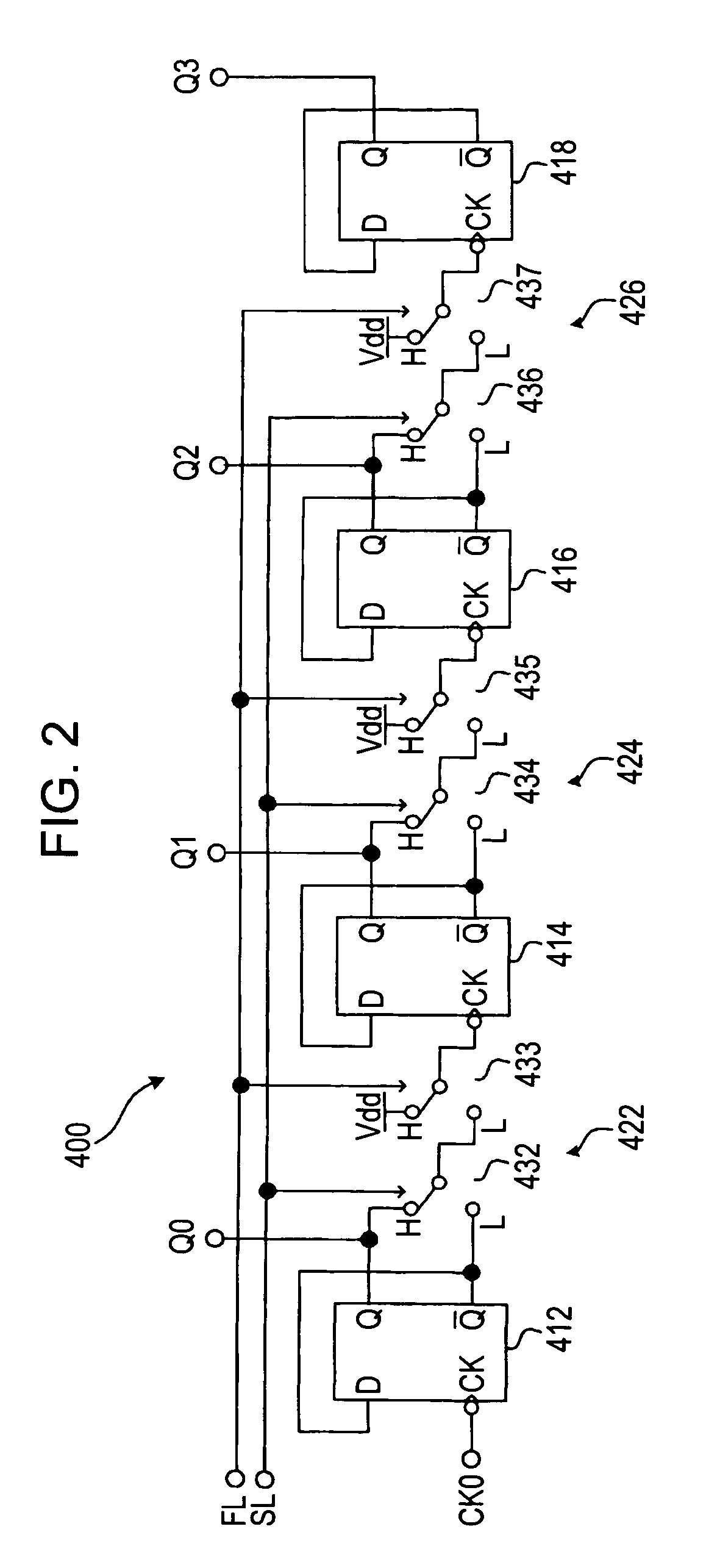Counter circuit, AD conversion method, AD converter, semiconductor device for detecting distribution of physical quantities, and electronic apparatus
a counter circuit and conversion method technology, applied in the field of asynchronous counter circuits, can solve the problems of inability to perform up-counting and down-counting, the counter is not suitable for continuously performing counting, and the operation of all flip-flops is restricted
- Summary
- Abstract
- Description
- Claims
- Application Information
AI Technical Summary
Benefits of technology
Problems solved by technology
Method used
Image
Examples
third embodiment
of the Operation of Counter Circuit
[0188]FIG. 10 is a timing chart for explaining the operation of the counter circuit 400 according to the third embodiment shown in FIG. 9.
[0189] As opposed to the first embodiment in which up-counting or down-counting is based on negative edges, in the third embodiment, the clock CK0 is used as the least significant bit Q0. Although descriptions corresponding to those relating to FIGS. 5A and 5B will be omitted, the basic ideas are the same as in the first embodiment, and the same advantages are achieved.
[0190] Furthermore, by using the clock CK0 as the least significant bit Q0, the number of count bits is increased by one, i.e., doubled, compared with the first embodiment. Furthermore, since High level and Low level of the clock CK0 contribute to count values, counting operations are performed based on both edges of the clock CK0, so that the speed of counting operations is doubled.
[0191] Similarly to the application of the second embodiment to...
first embodiment
of the Operation of the Solid-State Imaging Device
[0261]FIG. 14 is a diagram for explaining an operation of the column AD circuits 25 in the solid-state imaging device 1 according to the first embodiment shown in FIG. 11. As a mechanism for converting analog pixel signals sensed by the unit pixels 3 of the pixel unit 10 into digital signals, for example, a point where the ramp-waveform reference signal RAMP that decreases at a specific gradient matches the voltage of a reference component or signal component in pixel signals from the unit pixels 3. Then, counting is performed based on a count clock between the time when the reference signal RAMP used for comparison is generated and the time when the signal corresponding to a reference component or signal component in pixel signals matches the reference signal, whereby a count value corresponding to the magnitude of the reference component or signal component is obtained.
[0262] In a pixel signal output from the vertical signal line ...
second embodiment
of the Operation of Solid-State Imaging Device
[0305]FIG. 16 is a timing chart for explaining the operation of the column AD circuits 25 in the solid-state imaging device 1 according to the second embodiment shown in FIG. 15. AD conversion in the column AD circuits 25 is performed in the same manner as in the first embodiment, so that detailed description thereof will be omitted.
[0306] In the second embodiment, the data storage units 256 are added to the construction of the first embodiment. The basic operations including AD conversion are the same as those in the first embodiment. However, before the operation of the counter 254 (t30), based on a memory transfer instruction pulse CN8 from the communication and timing controller 20, the results of counting associated with a previous row Hx-1 is transferred to the data storage units 256.
[0307] According to the first embodiment, it is possible to output pixel data to the outside of the column processor 26 only after the second readin...
PUM
 Login to View More
Login to View More Abstract
Description
Claims
Application Information
 Login to View More
Login to View More - R&D
- Intellectual Property
- Life Sciences
- Materials
- Tech Scout
- Unparalleled Data Quality
- Higher Quality Content
- 60% Fewer Hallucinations
Browse by: Latest US Patents, China's latest patents, Technical Efficacy Thesaurus, Application Domain, Technology Topic, Popular Technical Reports.
© 2025 PatSnap. All rights reserved.Legal|Privacy policy|Modern Slavery Act Transparency Statement|Sitemap|About US| Contact US: help@patsnap.com



